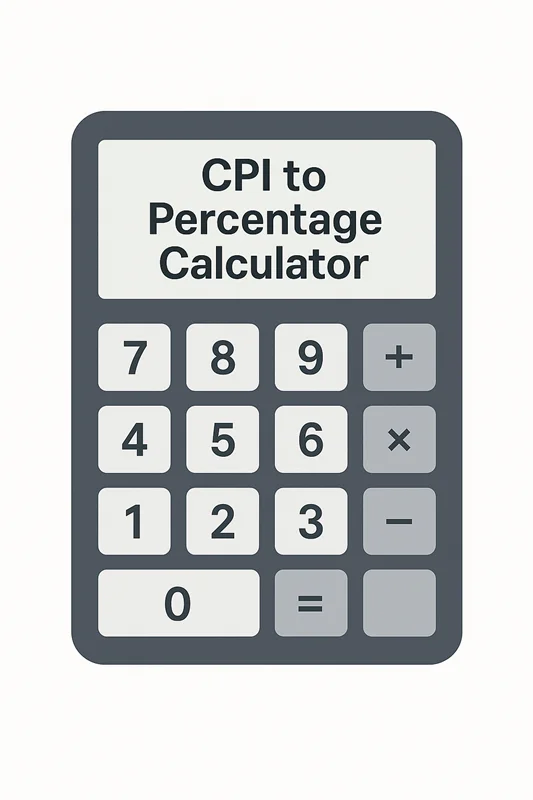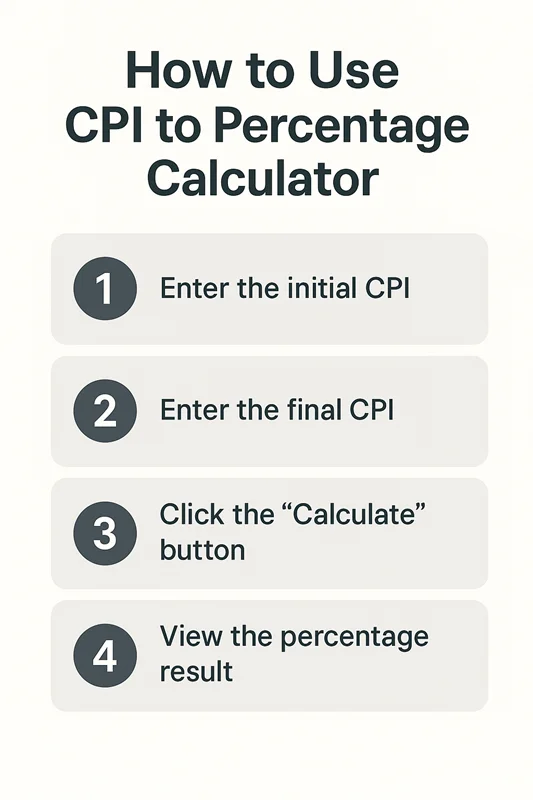Calculate percentage change between CPI values
Struggling to convert your CPI to percentage for job applications or higher studies? You’re not alone! Many students find themselves confused when they need to translate their Cumulative Performance Index (CPI) into a percentage format that employers and universities understand.
Whether you’re from GTU, AMU, IIT, or any other Indian university, this guide will help you convert CPI to percentage using the correct formula for your institution. We’ll also provide you with a handy calculator tool and step-by-step examples to make the process crystal clear.
CPI (Cumulative Performance Index) is a grading system used by many Indian universities to evaluate a student’s overall academic performance across all semesters. Think of it as your academic report card that combines all your semester grades into one number.
Here’s how CPI differs from other grading systems:
Most universities calculate CPI using this basic formula: CPI = (Total Grade Points Earned) ÷ (Total Credit Hours Attempted)
The CPI typically ranges from 0 to 10, where 10 represents excellent performance.
Converting your CPI to percentage becomes essential in several situations:
Different universities use different conversion formulas, so it’s crucial to use the right one for your institution.

The most commonly used CPI to percentage formula is:
Percentage = CPI × 9.5
However, different universities may use slightly different multipliers:
Percentage = CPI × 9.5
Gujarat Technological University uses:
Percentage = (CPI – 0.75) × 10
Aligarh Muslim University typically uses:
Percentage = CPI × 9.5
Let’s see how these formulas work with real examples:
Example 1: Generic Formula
Example 2: GTU Formula
Example 3: Standard Formula
| CPI Score | Generic Formula (×9.5) | GTU Formula | Approximate Grade |
|---|---|---|---|
| 9.5 | 90.25% | 87.5% | A+ (Excellent) |
| 9.0 | 85.5% | 82.5% | A (Very Good) |
| 8.5 | 80.75% | 77.5% | B+ (Good) |
| 8.0 | 76.0% | 72.5% | B (Above Average) |
| 7.5 | 71.25% | 67.5% | C+ (Average) |
| 7.0 | 66.5% | 62.5% | C (Below Average) |
| 6.5 | 61.75% | 57.5% | D (Pass) |
Different universities across India have their own approaches to convert CPI to percentage:
Most state universities in India follow the standard CPI × 9.5 formula, but it’s always best to check with your specific institution for their official conversion method.
Understanding the differences between various grading systems helps you communicate your academic performance correctly:

While similar, CPI and CGPA may have slight differences depending on your university. Both typically use a 10-point scale and similar conversion formulas.
Use the formula specified by your university. If unsure, the generic formula (CPI × 9.5) is most widely accepted.
No, different universities may have different conversion methods. Always check your institution's official guidelines.
Yes, GTU uses the formula (CPI - 0.75) × 10, which differs from the standard CPI × 9.5 formula.
Most Indian employers prefer percentage format, so it's better to convert your CPI to percentage for job applications.
The conversion is standardized by universities, so using the correct formula gives you the official percentage equivalent.
Yes, you can reverse the formula. For generic conversion: CPI = Percentage ÷ 9.5
A CPI below 6.0 typically indicates academic challenges. Focus on improvement and consider academic counseling if available.
Converting your CPI to percentage doesn’t have to be complicated. Here are the key takeaways:
Remember These Points:
Pro Tips for Students:
When to Use Each Format:
Whether you’re applying for jobs, higher studies, or competitive exams, having your CPI properly converted to percentage format will make your applications smoother and more professional. Bookmark this guide and use our calculator whenever you need quick conversions!
Need help with other academic calculations? Check out our related tools for CGPA conversion, grade point calculations, and our comprehensive percentage calculator for various academic needs.